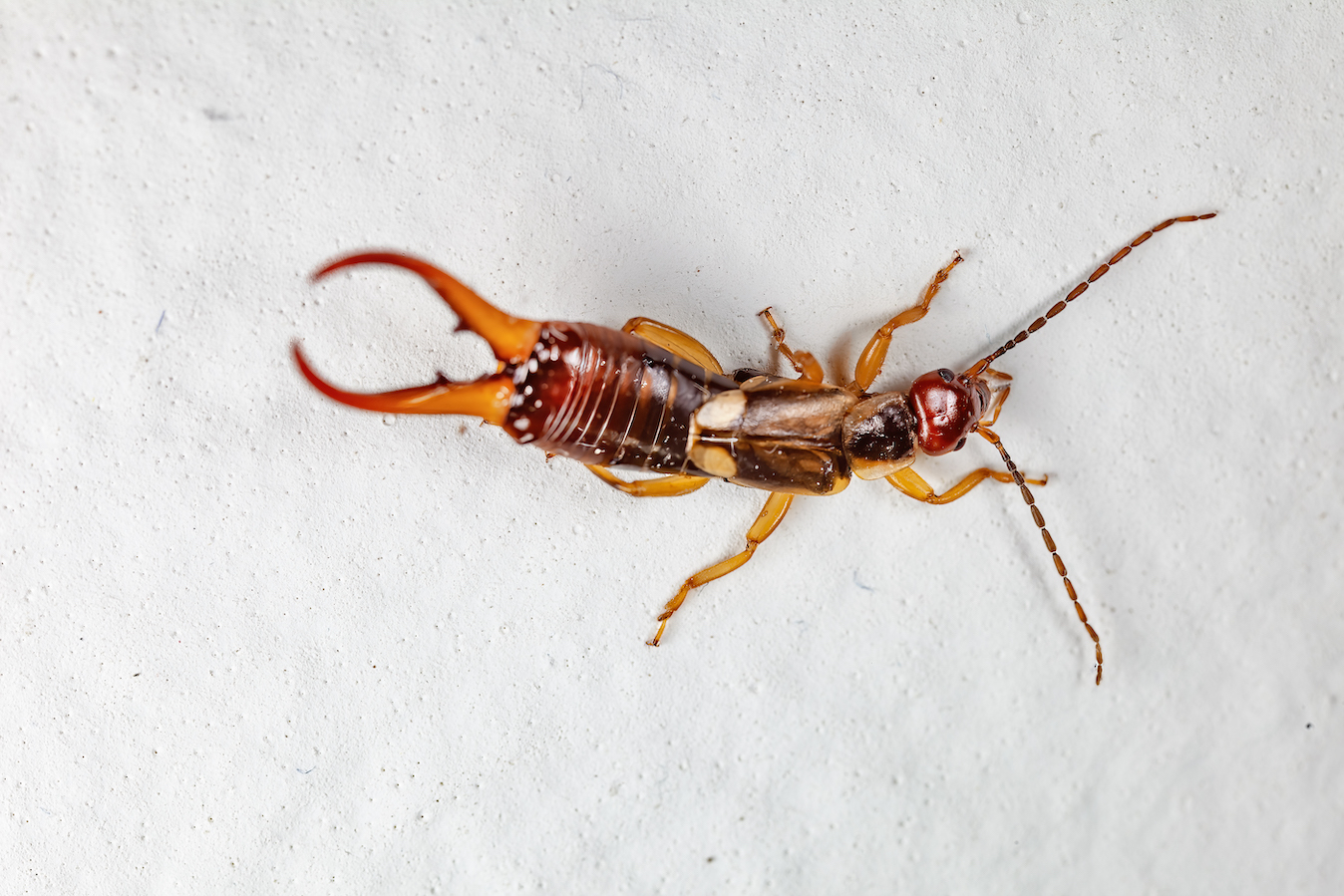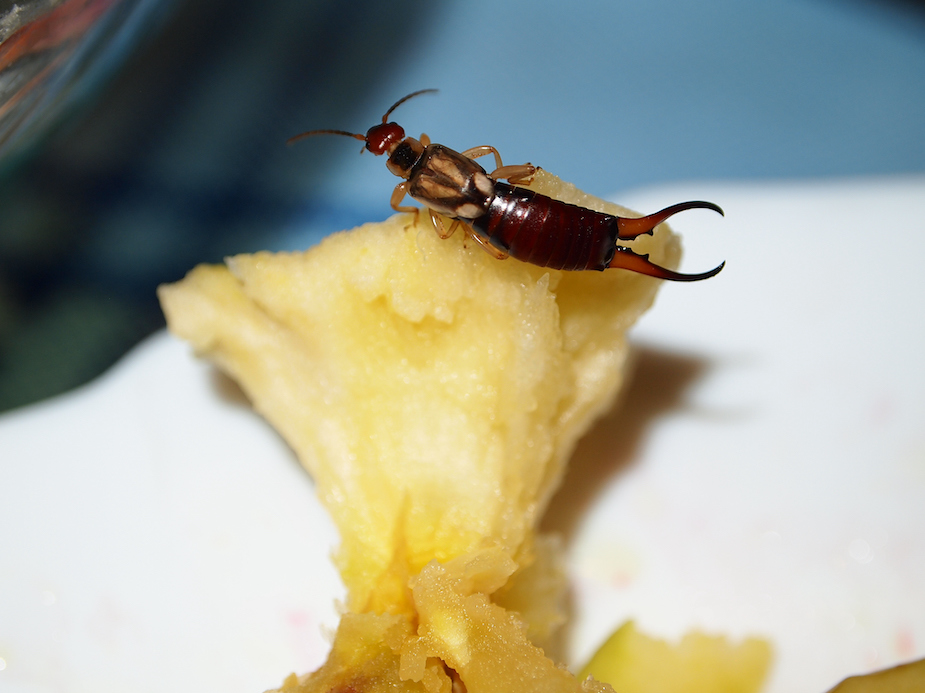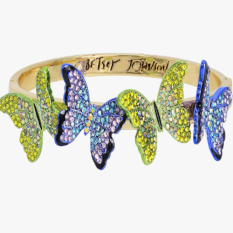8 Non-Toxic Tricks To Eradicate Earwigs From Your House — and Keep Them Gone!
It's easier than you think to say bye-bye to these bugs once and for all!

Between their creepy pincers and false reputation for crawling in people’s ears and laying eggs, you may be surprised to learn that earwigs are more of a nuisance than a threat. They’re big fans of decaying organic matter and love dark, moist places — both of which they can usually get fairly easily outside. And that’s exactly where we want them, because their diet helps support a healthy ecosystem. When the conditions are right though, they’ll slip through cracks and crevices and that’s when you find earwigs in house. If there are enough of them, they can cause damage to your houseplants, eat your fruit and leave some ick behind. So we polled a pest-pro to find out how to get them out of your house fast.
What are earwigs?

“Earwigs are small insects that are ½-¾ inch long and flat. They are usually black or dark brown with two little pincers on their tail end,” explains Eric Clapper, owner of Tri-X Pest Management in Las Vegas, NV. These pincers are for far more than decoration: they’re used for self-defense, hunting and even courting.
The nocturnal insect looks far more dangerous than they actually are. “Earwigs are not venomous and don’t sting or bite,” continues Clapper. “Their main food sources are decaying plant material and other weak or dead insects.”
There are a handful of species in North America, but that number is multiplied to over 1,800 across the world.
Why do I suddenly have earwigs in my house?
The weather may be partially to blame. “They are more active in the warmer months, as well as early fall when leaves and plants die off or go dormant,” Clapper says. You’ll find certain species during the fall because they’re seeking protection from the cold.
“Earwigs will occasionally sneak inside through small cracks in the structure or other openings, and like dark, moist areas around the home such as soil, compost or piles of debris,” he continues. This is because decaying matter offers both shelter from the daylight and a reliable food source of organic matter.
It’s also possible earwigs may have hitched a ride in a flower bouquet or houseplant, which is why it’s important to inspect flowers and houseplants before bringing them into your home.
How do you know if your house is infested with earwigs?

You might notice plants and flowers with chew marks and/or tiny black pellets of earwig excrement. The yellow-brown liquid they excrete when disturbed has a distinguishably foul odor as well.
The most obvious sign, of course, is actually seeing earwigs in the house. You might spot live ones in damp soil or scurrying around at night along baseboards or in bathrooms (especially if you turn on a light in the dark). Dead earwigs will most likely be found in the basement, a bathroom or in cabinets.
If you have earwigs, beware termites
Earwigs love to sneak into the house through the most unsuspecting of openings, and they’re also attracted to moisture. Finding them in your home could be a sign of water-damaged wood or wood-destroying organisms such as termites or carpenter ants. “If excessive amounts are seen inside, then a good inspection for cracks, holes and leaks would be advised,” Clapper says. As annoying as an infestation of earwigs in the house is, you might actually end up thanking them for alerting you to a major issue.
How do I get rid of earwigs in my house?
If you’re gearing up for battle against an earwig infestation, you’ll be happy to know that all-natural methods are incredibly effective. “There are also multiple bait and liquid products to help deter and kill earwig populations if necessary,” Clapper says. If you’d prefer not to go the DIY route, you can always seek pest control in the form of treatment and regular maintenance to prevent another issue.
More good news: If you’ve only seen one or two, it’s likely that they just got turned around somewhere. Earwigs also don’t reproduce indoors, so you don’t have to worry about eggs hatching and the population multiplying.
1. Remove excess moisture
This is key to getting rid of earwigs in your house. Without excess moisture, they have nowhere to hide. A lot of this has to do with general home care, like fixing leaks throughout your house, checking your dryer vent (click through to learn more about cleaning your dryer vent.) and cleaning out the gutters. Specific problem areas can benefit from dehumidifiers and vapor barriers.
You’ll find opportunities outside as well. “Keep landscaping well maintained and properly watered without over watering and allowing puddles to form,” Clapper recommends. When earwigs take up residence close to our house, it’s only a matter of time before they find their way inside.
2. Set a a trap
Earwigs are fairly predictable, which makes setting traps for them straightforward. And if you add some kind of nightlight to the setup? The earwigs won’t be able to resist and they’’ll be even more effective. Here, 3 DIY traps for earwigs in house — try one or use them all:
- Mix cooking oil with soy sauce or fish oil (like from a can of tuna with oil or sardines) in a shallow bowl or lid and wait for the earwigs to become attracted to the scent and then drown in the oil.
- Sprinkle fish oil on a glue trap and place them wherever you usually see earwigs.
- Roll up and secure a newspaper or magazine, then get it wet to attract the earwigs (they can’t resist a moist shelter). The next morning, dunk it into soapy water to get rid of them.
3. Sprinkle some boric acid

Search indoors, especially in bathrooms and crawl spaces, as well as under kitchen sinks and around doorways and window frames. In these places you can sprinkle food-grade diatomaceous earth (Buy from Amazon, $8.70) or boric acid (Buy from Amazon, $14.99) to dehydrate the earwigs, or drown them with a mix of dish soap and water.
4. Make a DIY bug spray
If you’re seeing earwigs in the house instead of just signs of them, mix equal parts rubbing alcohol and water in a spray bottle. The alcohol acts almost like a firearm for insects, bypassing the insect’s waxy shell and killing them immediately.
To get rid of earwigs from outside the house:
1. Turn off the lights…
Porch lights are like a welcome sign for flying earwigs. If they’re present in your region, keep your exterior lights off at night when possible, and minimize interior lights as well. They won’t even know you’re there.
…or replace the lights
Bugs love the blue wavelength that standard light bulbs emit, but sodium lights are more yellow. Using them outdoors and by windows will keep flying earwigs away by removing the temptation.
2. Plant *these* herbs around your home

Earwigs are turned off by herbaceous scents, which is the perfect excuse to plant an herb garden around your home. Plants like rosemary, fennel, basil and many more will help keep them away — while making your meals that much more delicious. It’s a win-win.
(To boost growth of your herbs, click through to learn about 5 kitchen scraps that make gardens greener.)
3. Seal cracks and crevices
Inspect the basement, doors and windows, crawlspaces and anywhere else that could compromise the seal between the indoors and outdoors. A caulking gun should be able to get the job done and thwart earwigs in the house.
Watch this video to see some of these tips and more in action:
For more on insect control click through the links below!
Stink Bugs Are Not Harmless — Here’s How To Stop a Chemical Burn and Dispose of the Bugs
Why Are Mosquitoes Attracted to Me? 4 Reasons + Tips for Getting Those Skeeters to Pass By
Bugs In Your Home? Exterminators Say These 5 Pantry Staples Will Pest-Proof Any Space
The Best DIY Ant Killers That Really Work, According to Pest Pros













